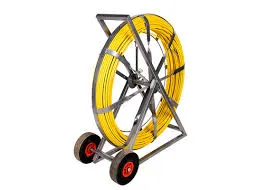
-
 Afrikaans
Afrikaans -
 Albanian
Albanian -
 Amharic
Amharic -
 Arabic
Arabic -
 Armenian
Armenian -
 Azerbaijani
Azerbaijani -
 Basque
Basque -
 Belarusian
Belarusian -
 Bengali
Bengali -
 Bosnian
Bosnian -
 Bulgarian
Bulgarian -
 Catalan
Catalan -
 Cebuano
Cebuano -
 Corsican
Corsican -
 Croatian
Croatian -
 Czech
Czech -
 Danish
Danish -
 Dutch
Dutch -
 English
English -
 Esperanto
Esperanto -
 Estonian
Estonian -
 Finnish
Finnish -
 French
French -
 Frisian
Frisian -
 Galician
Galician -
 Georgian
Georgian -
 German
German -
 Greek
Greek -
 Gujarati
Gujarati -
 Haitian Creole
Haitian Creole -
 hausa
hausa -
 hawaiian
hawaiian -
 Hebrew
Hebrew -
 Hindi
Hindi -
 Miao
Miao -
 Hungarian
Hungarian -
 Icelandic
Icelandic -
 igbo
igbo -
 Indonesian
Indonesian -
 irish
irish -
 Italian
Italian -
 Japanese
Japanese -
 Javanese
Javanese -
 Kannada
Kannada -
 kazakh
kazakh -
 Khmer
Khmer -
 Rwandese
Rwandese -
 Korean
Korean -
 Kurdish
Kurdish -
 Kyrgyz
Kyrgyz -
 Lao
Lao -
 Latin
Latin -
 Latvian
Latvian -
 Lithuanian
Lithuanian -
 Luxembourgish
Luxembourgish -
 Macedonian
Macedonian -
 Malgashi
Malgashi -
 Malay
Malay -
 Malayalam
Malayalam -
 Maltese
Maltese -
 Maori
Maori -
 Marathi
Marathi -
 Mongolian
Mongolian -
 Myanmar
Myanmar -
 Nepali
Nepali -
 Norwegian
Norwegian -
 Norwegian
Norwegian -
 Occitan
Occitan -
 Pashto
Pashto -
 Persian
Persian -
 Polish
Polish -
 Portuguese
Portuguese -
 Punjabi
Punjabi -
 Romanian
Romanian -
 Russian
Russian -
 Samoan
Samoan -
 Scottish Gaelic
Scottish Gaelic -
 Serbian
Serbian -
 Sesotho
Sesotho -
 Shona
Shona -
 Sindhi
Sindhi -
 Sinhala
Sinhala -
 Slovak
Slovak -
 Slovenian
Slovenian -
 Somali
Somali -
 Spanish
Spanish -
 Sundanese
Sundanese -
 Swahili
Swahili -
 Swedish
Swedish -
 Tagalog
Tagalog -
 Tajik
Tajik -
 Tamil
Tamil -
 Tatar
Tatar -
 Telugu
Telugu -
 Thai
Thai -
 Turkish
Turkish -
 Turkmen
Turkmen -
 Ukrainian
Ukrainian -
 Urdu
Urdu -
 Uighur
Uighur -
 Uzbek
Uzbek -
 Vietnamese
Vietnamese -
 Welsh
Welsh -
 Bantu
Bantu -
 Yiddish
Yiddish -
 Yoruba
Yoruba -
 Zulu
Zulu


វិច្ឆិកា . 08, 2024 17:51 Back to list
fiber glass pole
The Versatility and Applications of Fiberglass Poles
Fiberglass poles have emerged as a popular option in a variety of industries, due to their unique properties and advantages over traditional materials such as wood and metal. This article delves into the characteristics, benefits, and applications of fiberglass poles, showcasing their significance in modern construction, outdoor activities, and telecommunications.
What are Fiberglass Poles?
Fiberglass poles are constructed using a composite material made from woven glass fibers embedded within a resin matrix. This combination results in a lightweight yet incredibly strong product. Depending on the specific application, various types of resins can be used, including epoxy, vinyl ester, and polyester. The manufacturing process involves layering glass fibers and applying resin, followed by curing the material to achieve maximum strength and durability.
Key Advantages of Fiberglass Poles
1. Lightweight One of the most significant benefits of fiberglass poles is their lightweight nature. They are much lighter than traditional wooden or metal poles, making them easier to handle, transport, and install. This lightweight property reduces labor costs and simplifies the logistical aspects of project management.
2. Corrosion and Weather Resistance Fiberglass poles are inherently resistant to corrosion, chemicals, and UV radiation. This makes them an ideal choice for applications where exposure to harsh weather conditions is a concern, ensuring a longer lifespan with minimal maintenance.
3. Electrical Insulation Unlike metal poles, fiberglass is a non-conductive material. This property makes fiberglass poles particularly suitable for electrical installations, reducing the risk of short circuits and providing an additional layer of safety.
4. Flexibility and Strength Fiberglass poles exhibit remarkable strength-to-weight ratios. They can withstand heavy loads and resist bending while maintaining their structural integrity. This durability makes them a reliable choice for various demanding applications.
fiber glass pole

5. Easy Customization Fiberglass poles can be molded and designed to meet specific requirements. They can be crafted in different lengths, diameters, and shapes, making them highly customizable for various uses.
Applications of Fiberglass Poles
1. Telecommunications In the telecommunications industry, fiberglass poles are commonly used for supporting antennas and communication equipment. Their non-conductive nature ensures safety and minimizes interference, making them a preferred choice for cellular tower installations.
2. Sporting and Recreational Uses Fiberglass poles are widely used in sports, especially in the construction of goalposts, flagpoles, and tent poles. Their lightweight properties make them easy to set up and transport, making them ideal for outdoor events and recreational activities.
3. Construction and Signage In construction, fiberglass poles are used for various applications including fencing, scaffolding, and as support structures. Their resistance to weathering makes them ideal for permanent and temporary installations. Similarly, they are used for signage, creating durable and weather-resistant structures for displaying information.
4. Marine Applications Fiberglass poles are extensively used in marine environments, thanks to their resistance to saltwater corrosion. They are often employed as masts for boats, as well as for dock and buoy systems.
5. Agricultural Uses Farmers use fiberglass poles for fencing, trellises, and grounding rods in agricultural settings. Their durability and resistance to rot make them a long-lasting choice for outdoor use in agriculture.
Conclusion
In conclusion, fiberglass poles represent a versatile and innovative solution across a wide array of applications. Their lightweight yet durable nature, coupled with resistance to corrosion and electrical conductivity, makes them an attractive alternative to traditional materials. As industries continue to evolve, the demand for fiberglass poles is expected to grow, with their applications becoming even more diverse. From telecommunications to outdoor recreation, the utility of fiberglass poles is shaping the future of various sectors, emphasizing their importance in our daily lives and infrastructure.
Latest news
What Are Construction Tools and How Are They Used?
NewsJul.11,2025
Professional-Grade Duct Rodding Tools for Superior Cable Installation
NewsJul.11,2025
Enhancing Safety and Efficiency with Modern Hot Stick Solutions
NewsJul.11,2025
Empowering Cable Installation with Advanced Rodder Solutions
NewsJul.11,2025
Elevate Your Cable Installation Projects with Cable Pulling Tools
NewsJul.11,2025
Efficient Cable Handling Solutions: Cable Rollers for Sale
NewsJul.11,2025











